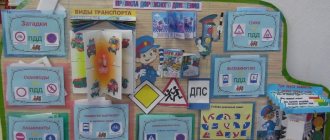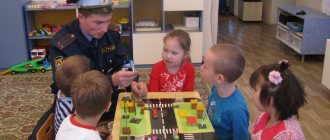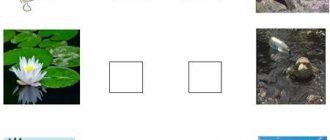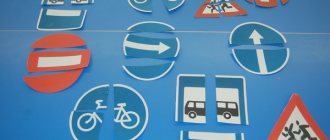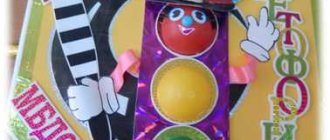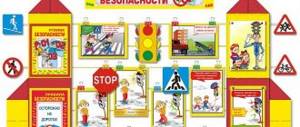- Essays
- Free theme
- Letter to the driver
How about dividing? How's the road? What's the landscape like outside the window? What's new in the distant land, how long will you be driving?
I think being a driver is very interesting. You get the opportunity to travel around cities, even across different countries, and meet other people. Being a driver is not only an interesting job, but also a very responsible one. Not only his own life, but also the lives of other people depends on how he follows the rules on the road.
And that’s why I want to ask the respected driver to be careful on the road. Follow traffic rules. Be attentive and friendly to pedestrians.
Also, please do not forget that you cannot drive drunk. By this act, the driver puts his life and the lives of pedestrians in danger. Do not forget that loved ones may be on the road.
During the inspection, fill the car with good gasoline and oil. After all, how long you take care of your vehicle will determine how long it will carry you.
Dear friend, I wish you good luck, less traffic jams and understanding people.
Poem about the driver
I am writing a letter to you, driver. I want to find out a lot. Where are you going on your long journey? And where should I look for you now? You are a trucker, a wild ranger. You are the tamer of all roads. And that makes me so happy that I was able to write to you.
Letter to driver essay
Dear driver! I am so glad that we are all going by bus to relax at the seaside. It's much better than sitting in class at school. But here we go and learn. And it’s so great that you turn on good music and films. Still, driving sometimes gets boring. Just look out the window...
Although again, thank you for making a lot of stops. And at gas stations, and just in beautiful places to take pictures and warm up.
But sometimes we drive so fast that I even wake up in fear. It seems that the bus is simply flying along the road, that its walls are shaking... And now it will either fall off the road or make a cosmic leap. But the teacher told me that it only seemed like it – the bus was traveling at normal speed.
I trust you, but be careful on the roads. The main thing is don’t fall asleep while driving! You definitely need to rest.
And it should also be noted that you are so polite! Just like in Moscow. In the capital, I noticed that drivers are much more polite (here they are controlled, my mother told me) than in our city. And in the village, by the way, they are more polite, since everyone knows everyone there. But you are so cheerful and, excuse me, cool.
I would never become a bus driver. Everything seems so difficult to me. The bus is so big – how do you turn the steering wheel, how do you take turns? What about parking?! And so many passengers - such a responsibility. No, if I drive, it will only be my own car - small and cute.
I think you are minding your own business. You probably loved toy cars as a child. My brother loves them too, maybe he will become a good driver.
Project “Letter to the Driver”
GBOU Ermolaevskaya correctional school - boarding school for students with disabilities
Project “Letter to the Driver”
Author of the project:
Shalabaeva Razida Dalmerovna
Deputy Director of BP
Ermolaevo 2020
Introduction
Author:
Velikorechina Irina Gennadievna, teacher.
Place of work:
GBOU Ermolaevskaya correctional boarding school for students with disabilities.
Project participants:
Pupils of the 5th group of the Ermolaevskaya correctional boarding school for students with disabilities, deputy director for VR, educators, traffic police officers.
Implementation period:
One month.
Project type:
Short.
Formulation of the problem
With the increase in the production of cars in our country and the increase in traffic intensity on the roads, the responsibility of all road users increases: drivers, pedestrians, passengers. Every year, 1 million 200 thousand people die in road accidents around the world. Road crashes account for a quarter of all deaths caused by injuries and injuries. Road accidents are most often caused by children themselves. This is caused by ignorance of the basic principles of traffic rules, the indifferent attitude of adults to the behavior of children on the roadway, and ineffective preventive work. Children left to their own devices do not know how to control their behavior. They have not yet developed the ability to anticipate the possibility of danger in a rapidly changing traffic environment. Therefore, they serenely run out onto the road in front of a stopped car and suddenly appear in the path of another. They consider it quite natural to ride a child’s bicycle onto the roadway or start a fun game here.
Relevance of the project:
Prevention of children's road traffic injuries, education of law-abiding behavior and teaching safe behavior of schoolchildren on the road and in transport, health promotion, development of physical, cognitive-speech, social-personal and creative abilities of boarding school students. Objective of the project
The “Letter to the Driver” project aims to create a system of work to prevent child road traffic injuries among students with disabilities, aimed at creating a culture of life safety.
Project objectives
This project involves solving the following tasks: - developing in children the need to comply with traffic rules; — involving the largest number of students in an in-depth study of traffic rules, — mastering the skills of providing first aid in case of an accident; — development of students’ creative abilities; — nurturing in children a sense of friendship, mutual assistance, and collectivism. — active involvement of parents in the promotion of traffic rules.
Project hypothesis
Based on the purpose and objectives of the project, I put forward the following hypothesis: as a result of the implementation of the “Letter to the Driver” project, students should develop the following parameters for the rules of safe behavior on the streets and roads: -attitude to traffic rules as an important social value; - knowledge of methods of providing first aid to victims of road accidents, skills in promoting traffic rules; - possession of safe behavior skills on the streets and roads.
Project Definition
The “Letter to the Driver” project is long-term and lasts for one year.
The subject of the project
is a set of knowledge and skills on traffic rules for students with disabilities in a special school.
The object of the project
is the pupils of the Ermolaevskaya correctional boarding school for students with disabilities.
Conditions for achieving the goals and objectives of the project:
- the interest of all subjects of the educational process in the practical solution of the goals and objectives,
— organizational work with traffic police officers; — a clear mechanism for project implementation. Project participants:
- school teachers, - students with disabilities at the Ermolaevskaya correctional boarding school, - administration of the Ermolaevskaya correctional boarding school for students with disabilities, - traffic police inspector for the Kuyurgazinsky district.
Main directions of project implementation:
- educational, - practical.
Stages of the project:
Stage 1 - preparatory
At this stage, the development of tasks, goals, and a hypothesis of the project takes place. When planning work on the project, regulatory documents on road safety were studied, namely: - The Constitution of the Russian Federation - The Convention “On the Rights of the Child” - Traffic rules - Charter of the educational institution - Curriculum - Methodological recommendations for the life safety course for conducting classes on SDA At this stage, the main directions of project implementation are developed, listing the main activities for working with all project participants and the expected results.
Stage 2 - project implementation
1. Organization of work with students:
Objectives:
- Provide students with basic education within the framework of state standards, - develop in students sustainable skills in observing and implementing traffic rules, - apply modern forms and methods of teaching and raising children aimed at preventing accidents on the roads, - use the material and technical potential of the school to train and educate competent road users. - cultivate a sense of mutual assistance and collectivism.
Forms of work:
- conversations - educational hours - open classes on traffic rules - drawing competitions - practical lessons on traffic rules - design of visual propaganda - games, competitions.
Plan of work with children of the Ermolaevsky correctional boarding school for students with disabilities
| №p/p | Event | Responsible |
| 1 | Basic rules of behavior on the streets and roads. Road traffic injuries | Educator Traffic police inspector |
| 2 | Where can I play? | Educator |
| 3 | Crossroads. Rules for their transition. | Educator |
| 4 | We are passengers | Educator |
| 5 | Exhibition of drawings “Letter to the driver | Art teacher |
| 6 | Pedestrian crossing, public transport stops | Educator Traffic police inspector |
| 7 | Classes for students on the site to practice preventive skills for behavior on the roads. | Educator Traffic police inspector |
| 8 | Open lessons on traffic rules | Educator |
| 9 | Games, quizzes. | Educator |
| 10 | Carrying out the “Letter to the Driver” campaign | Educator Traffic police inspector |
Stage 3 - analysis of the project results
Expected results
A. Intermediate - involving the largest number of students in an in-depth study of traffic rules, - mastering the skills of providing first aid in case of an accident; — development of students’ creative abilities; — nurturing in children a sense of friendship, mutual assistance, and collectivism. — active involvement of parents in the promotion of traffic rules. — increasing the professional skills of teachers in working with families to prevent PDSD. B. Remote - the formation in children of the need to comply with traffic rules; - knowledge of methods of providing first aid to victims of road accidents, skills in promoting traffic rules; — practical application of traffic rules knowledge; — reduction of cases of traffic violations.
List of used and recommended literature:
Kovalko V.I. Game modular course on traffic rules - M.: "VAKO", 2004.
Novikov S. Safe way to school. M., 1996.
Rybin A.L. ,Maslov M.V. Road traffic safety of pedestrians, passengers, drivers: a manual for students - M.: Education", 2008.
Cherepanova S.N. Traffic rules - M.: Scriptorium Publishing House, 2009
Shalaeva G.P. ABC of a small pedestrian. M.: Philol. SLOVO Island, Eksmo, 2008.
Elkin G.N. Rules for safe behavior on the road. – St. Petersburg: Litera Publishing House, 2009.
Digital educational resources:
https://kaz.docdat.com/pars_docs/refs/41/40658/40658_html_md895583.png - child pedestrians
https://sadik91.org.ru/images/stories/img/1650.jpg - kids
https://www.sweetsdetki.ru/images/stories/svetofor.jpg - traffic light
https://www.mamina-shkola.ru/wp-content/uploads/2013/01/zebra_2010-11-19_17.49.32.jpg - traffic controller at a traffic light
https://www.gandex.ru/upl/oboi/gandex.ru-12641_b7718b50c3926d2cdc9d03848d12521c.jpg
Website of the children's educational magazine “Funny Bear Cubs” https://www.medvejata.ru/greenlight/
Website “Network of Creative Teachers” https://www.it-n.ru/Board.aspx?cat_no=2168&Tmpl=Thread&BoardId=2170&ThreadId=23860
Website "Children's e-books and presentations" https://viki.rdf.ru/cat/1_klass/
Information educational portal https://www.rusedu.ru/subcat_28.html
Application
Traffic rules quiz
Goal: Protecting the life and health of young citizens, protecting their health, rights and legitimate interests by preventing road accidents using various forms of activity.
Tasks
— developing in children the need to comply with traffic rules;
— mastering the skills of providing first aid in case of an accident;
— development of students’ creative abilities;
— nurturing in children a sense of friendship, mutual assistance, and collectivism.
When all captains have received route sheets, the Inspector orders the teams to disperse to stations.
Station 1 – “Auto rally”
Decor.
Drawings and photographs of the first cars, bicycles, tanks. Members of the jury.
We welcome everyone gathered at our station.
We are sure that only experts in traffic rules have gathered here, so we can start our rally. But, unfortunately, not all participants will be able to reach the finish line. It takes a lot of effort to get your car to cross the finish line first. However, it seems to me that there were more drivers at the start than we had cars ready for. This means that we will have to fight for improvised vehicles. The condition is this: while the music is playing, you can choose a car to suit your taste, and as soon as it stops, quickly take the nearest car. But keep your hands behind your back. Each team must select 2 participants. So, let's begin. The game “Win a car” is played to rhythmic music. Chairs act as a car. Teacher information.
Gone are the days when cars were prohibited from driving on the streets at speeds exceeding 12 versts per hour (a verst is 1.07 km). Or a man with a red flag was obliged to run in front of a mechanical cart in cities, “in order to thereby warn of danger.” For example, today within Moscow, cars are allowed to reach speeds of up to 80 km/h, and on the Moscow Ring Road - even up to 110 km/h. On expressways in European countries and the United States, cars reach speeds of over 200 km/h.
Station 2 - “Find out the sign”
Jury member:
At station 1 we divided the vehicles, now before we hit the road, we want to test your knowledge of traffic signs. Next, the riddles are read and the teams answer.
I want to ask about the sign. The sign is drawn like this: In a triangle, the guys are running as fast as they can somewhere. What is this sign? (Careful, children!)
We were walking home from school, We saw a sign over the pavement. Circle, inside - a bicycle, There is nothing else. What is this sign? (Bike Lane)
Cars are racing at full speed, And suddenly a sign comes towards us: It shows a fence. I rub my eyes and look straight: Is the highway locked? What kind of sign is this? (Railroad crossing)
A friend fell ill on the road. I looked around, I'm looking for help around and I saw (a red cross). I hope everyone knows what this means? (Medical Center)
Here we are walking along the pavement. Let's go home. We see: a bright sign is hanging. And it says something. Red background, brick on it. We answer and don’t wait! (Traffic is closed)
Well, what kind of sign is this? It's drawn like this. Answer everyone together. A man digs the earth. The sign is not permanently installed. (Men at work)
I saw a strange sign. I was surprised, friends. There’s a fork in it, there’s a knife in it – you just can’t pass by. Tell me quickly what kind of sign is in my hand. (Food station)
That's a sign! I can’t believe my eyes: What is the battery for? Does Steam Heating Help with Movement? Maybe in a blizzard winter, drivers need to warm up here? (Railway crossing with barrier)
Pedestrians have nothing to do on the road now. Even the area underground is much easier for us to navigate. (Underground pedestrian crossing) After the competition, members of the jury enter the number of points earned by this team into the route sheet. The team goes to the next station.
Station 3 – Drawing competition on the theme “Our friend – the traffic light”
Each team provides 2 drawings on the theme “Our friend is the traffic light”
Station 4 – “Traffic Light”
A traffic light is installed at the Station. The team listens to the instructions: “When the presenter turns on the green light, the guys should stomp their feet as if they were walking. When the yellow light is on, the guys should clap their hands. When the light is red, there should be silence in the hall.” After the competition, members of the jury enter into the route sheet the number of points earned by this team. The team goes to the next station.
Station 5 – “Polite Passenger”
Presenters. In different situations, we all become either pedestrians or passengers. Do you know what a good passenger should be?
1.Name the rules of safe behavior for bus and trolleybus passengers: •at the stop; •when landing; •in the cabin of a bus and trolleybus; •after disembarkation. 2. Name the rules of safe behavior for tram passengers: •at the stop; •when landing; •in a tram car; •after disembarkation. After the answers, all participants are given Reminders on safe behavior in transport. Guys, learn these reminders yourself and tell your friends and younger brothers and sisters about the rules of behavior in transport.
Memo for bus and trolleybus passengers
At the stop
1. Maintain order, behave calmly: don’t play, don’t push, don’t run. 2.Stay only on the sidewalk. 3. Do not go out onto the roadway. 4. Approach the door of a bus or trolleybus only after it has stopped completely.
Upon landing
1. Let exiting passengers pass. 2. Be careful when boarding so as not to be pinched by the closing doors.
Inside the bus and trolleybus
1.After landing, go forward, do not linger on the steps and on the platform near the doors. 2.In the cabin, hold on to the handrails, do not interfere with passengers passing through, and prepare to exit in advance. 3. When leaving, do not fuss or push.
After disembarkation
Cross to the opposite side of the street only at the pedestrian crossing.
Reminder for tram passengers
At the stop
1. Maintain order, behave calmly: don’t play, don’t push, don’t run. 2. At the landing site, do not stand close to the rails or tram car. 3.Wait for the tram on the sidewalk, do not stand close to the roadway. 4. Do not leave the sidewalk onto the roadway to board the tram until it stops completely.
Upon landing
1.Do not interfere with passengers exiting. 2. Maintain restraint: do not fuss or push. 3. Be attentive and careful not to get caught in doors.
In a tram car
1. Do not linger on the steps and on the entrance platform of the car, do not interfere with the passage of passengers. 2.Hold on to the handrails. 3. Do not stand at the doors or at the railing of the carriage turning device. 4.Prepare to go out in advance.
After disembarkation
1. Walk onto the sidewalk only through the pedestrian crossing if the stop has a landing area. 2. Walk onto the sidewalk without lingering on the roadway if there is no landing area at the stop. 3. In all cases, you must walk on the sidewalk, strictly observing the requirements of the Traffic Rules. After the competition, members of the jury enter into the route sheet the number of points earned by this team. The team goes to the next station.
Station 6 – “Poems about traffic rules”
Each team recites prepared poems about traffic rules; dramatization is possible. After the competition, members of the jury enter into the route sheet the number of points earned by this team. The team goes to the next station.
Station 7 – “Ambulance”
Participants are given a practical task: 1. Provide medical assistance to the victim if there is a wound? 2.Your friend needs to bandage his finger. Help him. After the competition, members of the jury enter into the route sheet the number of points earned by this team. The team goes to the next station.
Station 8 – “Blitz Tournament”
1. Where should pedestrians walk in a populated area? A. Along the curb B. Along the boudoir C. Along the sidewalk D. Along flower beds 2. What markings are applied to the roadway where pedestrians are allowed? A. White crosses B. Yellow circles C. Orange flowers D. White stripes 3. They “clumsily run through puddles” in the famous song by V. Shainsky A. Drivers B. Pedestrians C. Alice the Fox and Basilio the Cat D. Wet children 4. What should a pedestrian wear on his clothes to be more visible on the road at night? A. Reflectors (flickers) B. Rattles C. Bright toys D. White flags 5. How many signals does a pedestrian traffic light have? A. One B. Three C. Two D. Five 6. What signal does the traffic light not have? A. Blue B. Red C. Green D. Yellow 7. Which character from S. Mikhalkov’s children’s book repaired the traffic light and restored traffic? A. Uncle Styopa B. Carlson C. Crocodile Gena D. Aibolit 8. How should a passenger in a passenger vehicle be fastened? A. A soldier's belt B. A strong elastic band C. A seat belt D. A special chain 9. Which traffic light prohibits movement? A. Green B. White C. Red D. Blue 10. How does a traffic police inspector regulate traffic? A. Caps B. Flags C. Shawl D. Rod 11. At what age can you ride a bicycle on the roadway (with good knowledge of the Rules of the Road)? A. From 12 years old B. From 14 years old C. From 7 years old D. From 16 years old 12. What road sign cannot be found on the road? A. Camping B. Toilet C. Water park D. Recreation area 13. Who does not need to give up your seat on public transport? A. A healthy man B. A pregnant woman C. A disabled person D. An old woman 14. What should you not do on the bus? A. Pay the fare B. Enter the passenger compartment without stopping in the aisle C. Hold on to the handrails D. Distract the driver while driving 15. Which intersection is not there? A. T-shaped B. Cross-shaped C. Adjustable D. Magic Correct answers: 1-c, 2-d, 3-b, 4-a, 5-c, 6-a, 7-a, 8-c, 9 -c, 10-d, 11-b, 12-c, 13-a, 14-d, 15d. After the competition, members of the jury enter into the route sheet the number of points earned by this team. The team goes to the next station
Station 9 – “Ditty Contest”
The jury evaluates the performance of ditties about traffic rules
Sample versions of ditties
1. We are girlfriends - girlfriends, We have eyes and ears: We walk along the road, We read and sing everything.
Dear friends, listen to our advice: After all, the road is not a reading room and not a place for conversation.
We are good athletes, we love to play football. The pavement was turned into our field - a stadium.
Undoubtedly, the conclusion is clear to us, That the pass is dangerous for life, Not roads, but courtyards are the place for such a game.
2. To you about traffic rules and about the traffic police service. Today the four of us will sing ditties for you
There is a possibility for salvation: The best brake is caution. Save your life: do not run in front of the car.
Don't run across the road if the light is red. A yellow light warns: The path will soon be closed.
Or this: get ready to hit the road and pay attention! Both avenues and boulevards The streets are noisy everywhere, Walk along the sidewalk Only on the right side.
We drove out of town and found no sidewalks. We were a little confused: How should we move, tell me?
If there are no sidewalks, then find the side of the road. Just remember that transport needs to meet halfway.
I reached the road, I couldn’t find a traffic light, I was confused and stood there, waiting for your instructions.
In this case, look left and right, If you don’t see the transport, then have a good trip!
If the traffic rules were followed by everyone around you, then there would be no need for worry, remember this, young friend!
3.Oh, dad's driving today. It's a violation. I will repeat the traffic rules with him.
My mother strictly told me: Don’t yawn before the road! And look, she almost hit a Zhiguli!
This is a sign of this kind, it guards the pedestrian. We cross the road with my mother together in this place.
Let there be a reason for haste, Let you hurry again, But you can’t run out in front of the car onto the road.
Remember, young pedestrian, Remember, parents, jokes are bad on the road, Be very vigilant!
We sang ditties for you According to the traffic rules. We all must remember them, all without exception.
After the competition, members of the jury enter into the route sheet the number of points earned by this team. The teams line up, where the Inspector and the Traffic Light announce the winning team. An award is being given.
What should a driver remember?
I thought for a long time about contacting you, so I came up with a small cheat sheet. So I want you to:
- always followed road safety rules. This will help avoid accidents and accidents. Even if you are in a hurry, remember the traffic rules!
- did not forget about politeness. You need to be polite to passengers - don’t shout, don’t swear, don’t be rude. You also need to be polite to pedestrians - always let them pass at a pedestrian crossing.
- never drove while drunk. This is very dangerous and can lead to irreparable consequences.
- did not talk on the phone while working, did not play or listen to loud music. This distracts you from the road, and being distracted while driving is very dangerous. For example, you might miss a sign or a pedestrian.
- kept the bus clean and tidy. To make the ride pleasant for passengers.
- remembered the family - parents, children, loved ones. If you constantly remember that they are waiting for you home, you will be more attentive on the road.
- did not exceed the speed limit.
I would also like to ask you to be especially careful in areas where schools and kindergartens are located. All children are taught to be careful on the roads and follow traffic rules ; we even held a children's competition for the best knowledge of traffic rules . We drew pictures, drawings, postcards, and learned poetry. But children, especially first-graders, cannot always be attentive, so the driver needs to be doubly attentive. Remember that your children may be in the place of small children!
I also want to tell you not to forget to have your bus inspected and change tires on time in winter. This will make driving safe.
While driving, do not forget to fasten your seat belt, do this without fail, and make sure that the passengers sitting in front do so.
Remember that wearing a seat belt takes only a short time, but a seat belt can save a life! If you have children traveling with you, be sure to use a child seat.
